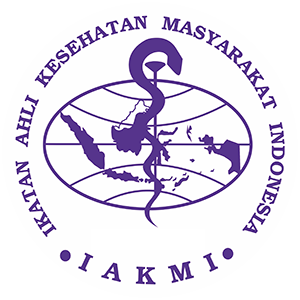RELATIONSHIP OF PHYSICAL ACTIVITY WITH FINE MOTOR SKILLS IN 3-4 YEARS OLD CHILDREN
DOI:
https://doi.org/10.30787/gaster.v20i2.856Keywords:
Physical Activity, Fine Motor Skills, Early ChildhoodAbstract
Introduction: The creative potential of children will develop best through systematic physical activity and adapted to the age group of growth and development. If the child's fine motor skills are often stimulated, then he will grow well and be able to do physical activities well, and if the child can do physical activities well it will affect his fine motor development.
The purpose : to see whether there was a relationship between physical exercise and fine motor skills in PAUD children.
Method : used is quantitative with a correlational approach. The population in this study was PAUD Islam Makarima children aged 3-4 years. The instruments used are physical activity questionnaires and DDST. The data analyzed using the Kendall test.
The results : obtained p-value 0.000 <0.05, which means that there is a relevant relationship between the two variables, namely physical activity and fine motor skills in PAUD children.
The conclusion is that Physical Activity is very influential in the development of children's fine motor skills.
Keywords : Physical Activity; Fine Motor Skills; Early Childhood
References
Bingham, D. D., Collings, P. J., Clemes, S. A., Costa, S., Santorelli, G., Griffiths, P., & Barber, S. E. (2016). Reliability and validity of the early years physical activity questionnaire (Ey-paq). Sports, 4(2), 1–14. https://doi.org/10.3390/sports4020030
Carson, V., Lee, E. Y., Hewitt, L., Jennings, C., Hunter, S., Kuzik, N., Stearns, J. A., Unrau, S. P., Poitras, V. J., Gray, C., Adamo, K. B., Janssen, I., Okely, A.
D., Spence, J. C., Timmons, B. W., Sampson, M., & Tremblay, M. S. (2017). Systematic review of the relationships between physical activity and health indicators in the early years (0-4 years). BMC Public Health, 17(Suppl 5). https://doi.org/10.1186/s12889-017-4860-0
Del Pozo-Cruz, B., Perales, F., Parker, P., Lonsdale, C., Noetel, M., Hesketh, K. D., & Sanders, T. (2019). Joint physical-activity/screen-time trajectories during early childhood: Socio-demographic predictors and consequences on health- related quality-of-life and socio-emotional outcomes. International Journal of Behavioral Nutrition and Physical Activity, 16(1), 1–13. https://doi.org/10.1186/s12966-019-0816-3
Kementerian Kesehatan RI. (2017). Profil Kesehatan Indonesia 2017 (Vol. 1227, Issue July). https://doi.org/10.1002/qj
Leonardo, A., & Komaini, A. (2021). Hubungan Aktivitas Fisik Terhadap Keterampilan Motorik. Jurnal Stamina, 4(3), 135-144. Retrieved from stamina.ppj.unp.ac.id
McPhillips, & Jordan-Black. (2017). The effect of social disadvantage on motor developmentin young children: A comparative study. Journal of Child Psychology and Psychiatry, 48, 1214–1222.













